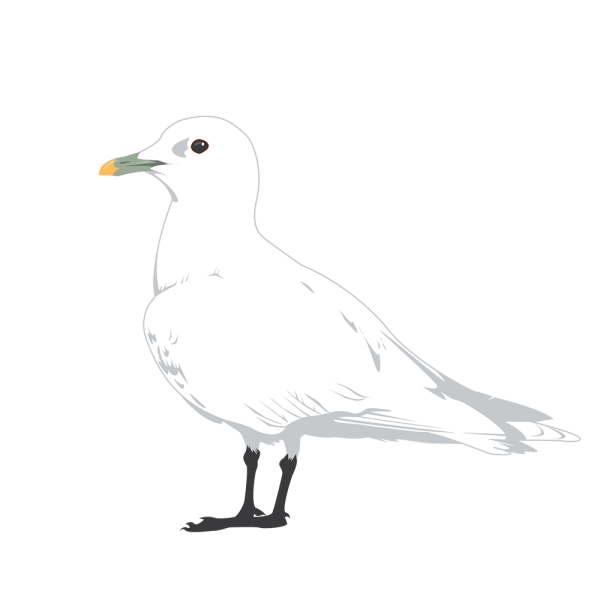Ivory gull
- Ecosystem: Marine
- Species group: Birds
- Publications: Arctic Marine Biodiversity Monitoring Plan Circumpolar Seabird Monitoring Plan International Ivory Gull Conservation Strategy and Action Plan
- AMA: Arctic Archipelago Atlantic Arctic Kara-Laptev

Jose A. Sencianes
| FECs Group | Parameter | Attributes | Priority | Extreme Events | Scale | Complexity | Recurrance | Method | Notes |
|---|---|---|---|---|---|---|---|---|---|
| Ivory gull | Numbers of birds | "Colony monitoring is approached in a variety of ways among the Arctic countries. An important first step is to select which population and demographic parameters should be prioritized at selected study colonies. To understand the status and trends of seabirds at the scale of the Arctic and to enhance the comparability of results, the CBird Group recommends the following actions: Develop a standardized circumpolar seabird colony registry format Compile and analyze Arctic seabird colony data, including trend data, every 10 years One priority of a monitoring plan is to confirm the locations of Arctic seabird colonies. Hence, we recommend that each country establish a colony registry, which can then be linked to the existing Circumpolar Seabird Colony Registry. Compilation and timely reporting of monitoring data also improves the effectiveness of a circumpolar monitoring program, creates data of use by many stakeholders, helps to identify problems and monitoring gaps,and justifies funds for continued monitoring work. The following parameters were identified by the CBird Group to be included in a circumpolar seabird colony monitoring program: Numbers of birds Productivity (recruitment) Survival Diets Phenology The basic monitoring unit is simply the numbers of birds present. Parameters affecting numbers over time include reproductive productivity and adult and juvenile survival. Other factors to include in a monitoring program depend on the specific aims. For example, diet is recognized as an important factor affecting seabird populations. Phenological data are also needed to assess changes in the life-cycles of birds due to factors such as climate change. Detailed methodologies in general are a subject which needs careful examination within each country and comparison between countries. CBird recognizes that a suite of other parameters, both physical and biotic, are needed for the interpretation of monitoring results. These include, but are not limited to, the following: Climate data (air temperature, winds, etc.) Oceanographic data (salinity, depth, sea temperature, currents, sea ice, etc.) Climate change models (including NAOs, sub-‐polar gyres, etc.) Plankton distributions and abundance Benthos data Fisheries and fish stock data Oil spill data (acute and chronic) Contaminants Development, disturbance, and shipping traffic It is not recommended that compilation of these data be part of national seabird monitoring programs, rather that cooperation be forged with those who have the task of measuring and compiling these relevant data." |
 Arctic Council Working Group
Arctic Council Working Group